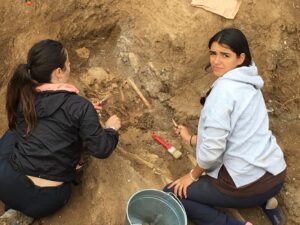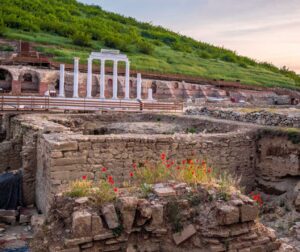
Tangible Heritage
It consists of monuments, buildings, archeological sites, historical sites and “natural” elements, such as trees, caves, lakes, mountains and others. The material also includes works of art, manuscripts, documents, historical artifacts, recordings, photographs, films, audiovisual documents, crafts and other archaeological, historical, scientific and artistic objects. These are objects of archaeological interest and everyday objects, such as utensils, clothes and other cultural objects.
We work together with archaeologists to preserve and study our rich cultural heritage. From ancient ruins to historical buildings, each site reveals a unique story. Become a volunteer and participate in excavations, conservation and popularization of the Bulgarian past.
See Where We Contribute






